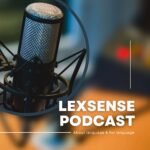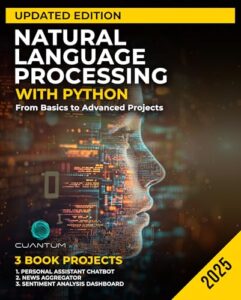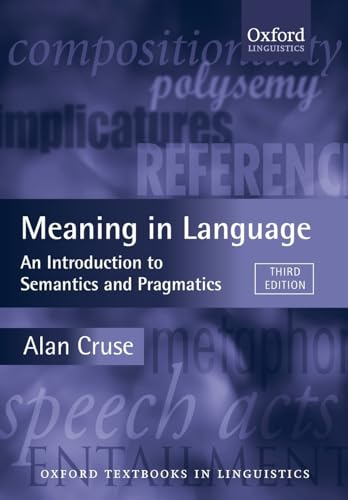
Abstract: Audio data tagging (annotation) is the process of assigning meaningful labels or metadata to audio recordings, is a critical step in enabling efficient and effective audio analysis, management, and retrieval. This paper provides a comprehensive overview of audio data tagging, covering its motivations, methodologies, applications, challenges, and future directions. We explore various tagging approaches, ranging from manual annotation to automated techniques to leverage machine learning, with a focus on advancements in deep learning. We also discuss the importance of standardization, data quality, and user interface design in creating high-quality tagged audio datasets. Finally, we highlight emerging trends and open research challenges in the field.
Keywords: Audio data tagging, audio recordings, speech recognition, sound analysis
Introduction
The proliferation of audio data, driven by the widespread use of mobile devices, recording equipment, and streaming services, has created a pressing need for efficient organization and analysis. However, raw audio data is inherently unstructured and difficult to process directly. Audio data tagging addresses this challenge by providing structured metadata that describes the content, context, and characteristics of audio recordings. This process is analogous to image tagging, but audio presents unique challenges due to its temporal nature, variable length, and complexity. Well-tagged audio data facilitates a multitude of applications, including music information retrieval, speech recognition, environmental sound analysis, and accessibility tools.
Motivations for Audio Data Tagging
Stem from the need to make audio content more understandable, searchable, and usable across various domains. As audio data grows rapidly—from podcasts and music to surveillance and environmental recordings—tagging becomes essential for organizing and retrieving relevant information efficiently.
In media and entertainment, it enables music recommendation, tags enable users to quickly find specific audio content based on keywords, genres, emotions, or other relevant attributes. tags provide a structured foundation for analysing audio datasets, supporting tasks such as genre classification, speaker identification, and acoustic event detection. In speech and language technology, it supports speech recognition, speaker identification, and emotion detection. For smart environments and IoT, it aids in detecting sounds like alarms or footsteps for real-time response. Audio tagging also enhances accessibility by enabling descriptive audio for the visually impaired. Ultimately, it drives innovation in AI by providing structured labels that help train more accurate and intelligent systems. provide a structured foundation for analysing audio datasets, supporting tasks such as genre classification, speaker identification, and acoustic event detection, facilitate the automatic organization and cataloguing of large audio libraries, enabling efficient storage, retrieval, and distribution and recommend audio content to users based on their preferences, listening history, and contextual information.
Methodologies for Audio Data Tagging
Methodologies for Audio Data Tagging involve a combination of signal processing and machine learning techniques to automatically label audio segments with meaningful metadata. Traditional approaches rely on feature extraction methods such as Mel-Frequency Cepstral Coefficients (MFCCs) and spectrogram analysis to capture key characteristics of the sound. These features are then used to train classifiers like Support Vector Machines (SVMs) or k-Nearest Neighbours (k-NN). In recent years, deep learning methods—especially Convolutional Neural Networks (CNNs), Recurrent Neural Networks (RNNs), and Transformers—have become dominant, as they can learn complex features directly from raw audio or spectrograms. Supervised learning is commonly used with labelled datasets, while semi-supervised and unsupervised methods are gaining popularity for handling large-scale unlabelled data. Data augmentation, transfer learning, and pre-trained audio embeddings (like OpenL3 or YAMNet) further enhance tagging performance. Together, these methodologies enable accurate, scalable, and efficient tagging across a wide range of audio applications.Audio data tagging approaches can be broadly categorized into three main categories:
Manual Tagging: Manual tagging involves human annotators listening to audio recordings and assigning relevant tags. This is the most accurate method, but it is also time-consuming and expensive, especially for large datasets. Factors influencing the quality of manual tagging include annotator expertise, clear tagging guidelines, and tools to facilitate the annotation process. Crowd-sourcing platforms can be used to scale manual tagging efforts, but quality control measures are essential.
Rule-Based Tagging: Rule-based tagging uses predefined rules and heuristics to automatically assign tags based on acoustic features extracted from audio signals. For example, a rule-based system might identify segments of speech based on the presence of specific phonetic features. While rule-based systems can be efficient, they are often limited in their ability to handle complex and nuanced audio content.
Traditional Machine Learning: Automatic tagging with machine learning involves using algorithms to identify and label audio content without manual intervention. By training models on annotated datasets, systems can learn to recognize patterns and features in sound, enabling them to assign relevant tags—such as speaker identity, emotion, or background noise—with high accuracy. This approach streamlines the process of organizing and analysing large volumes of audio data, making it faster, more consistent, and scalable across various applications like speech recognition, music classification, and environmental sound monitoring. Machine learning-based tagging employs algorithms to learn mappings between audio features and corresponding tags from labelled training data. Historically, approaches used hand-crafted features like Mel-Frequency Cepstral Coefficients (MFCCs), Chroma features, and spectral contrast combined with classifiers like Support Vector Machines (SVMs), Random Forests, and Gaussian Mixture Models (GMMs). These methods required significant domain knowledge for feature engineering.
Deep Learning: Deep learning has significantly advanced audio tagging by enabling models to automatically learn meaningful features from raw audio waveforms or spectrograms. Convolutional Neural Networks (CNNs) excel at detecting local patterns and spectral features, making them ideal for tasks like acoustic event detection and music genre classification. Recurrent Neural Networks (RNNs), including LSTMs and GRUs, are effective at capturing temporal dependencies, which is essential for understanding longer audio sequences in applications such as speech recognition and music structure analysis. More recently, Transformer networks have gained traction in audio processing, using self-attention mechanisms to model long-range relationships, and are showing strong potential in various audio tagging tasks.
Applications of Audio Data Tagging
Audio data tagging plays a crucial role in making sound-based information accessible, searchable, and usable across a wide range of applications. By labelling segments of audio with meaningful metadata—such as speaker identity, emotional tone, background noise, or musical genre—developers and researchers can train machine learning models to better understand and process sound. This is particularly valuable in fields like speech recognition, media indexing, music recommendation, and environmental monitoring. Tagging music known also as (Music Information Retrieval (MIR) with attributes like genre, mood, instrumentation, and artist enables improved music search, recommendation, and playlist generation. Music tagging also supports tasks like music transcription and automated music composition. Also, tagging helps voice assistants like Siri or Alexa interpret spoken commands more accurately, or enables streaming platforms to recommend songs based on mood or style. In addition, it supports accessibility initiatives by helping generate audio descriptions for visually impaired users and optimizing assistive listening devices (ALD). Ultimately, audio tagging bridges the gap between raw sound and intelligent systems that can understand and respond to it in meaningful ways.
Audio data tagging can also be applied on Environmental sound analysis, which involves detecting and interpreting everyday sounds like traffic, rain, sirens, or animal calls to understand and respond to real-world situations. These sounds—such as footsteps, rain, traffic, sirens, animal calls, or mechanical noises—carry valuable contextual information about the environment and events occurring within it. Analysing these auditory cues enables a wide range of real-world applications. Environmental sound analysis is used in smart cities for public safety alerts and urban planning—for instance, detecting “car horn,” or “siren” “car crashes”, or “crowd noise” in real time. In wildlife monitoring, tagging animal vocalizations with species identification, behaviour, and location supports ecological monitoring and conservation efforts.labels like “dog bark,” helps researchers track animal populations, migration patterns, or ecosystem health by automatically recognizing specific bird songs or animal calls and in the realm of healthcare and assisted living, Tagging medical sounds (e.g., heart sounds, lung sounds) with diagnostic information can aid in the detection of diseases and the monitoring of patient health. Sound recognition can detect distress signals like coughing, falls, or cries for help, triggering alerts in elder care facilities or home monitoring systems. By combining audio processing with machine learning, systems can classify sounds and make intelligent decisions based on the surrounding environment. Technically, this analysis often involves a combination of signal processing, spectrogram analysis, and machine learning—especially deep learning models like Convolutional Neural Networks (CNNs) and Recurrent Neural Networks (RNNs). These systems are trained on annotated datasets of environmental sounds to learn patterns and features associated with specific events or categories.
Challenges in Audio Data Tagging
Include both technical and practical obstacles that make accurate tagging complex. One major challenge is the variability and noise in real-world audio, where overlapping sounds, background noise, or poor recording quality can obscure important features. Labelling audio data is also time-consuming and often requires domain expertise, especially for nuanced tags like emotion or acoustic events. Additionally, the lack of large, balanced, and diverse annotated datasets limits model performance and generalizability. Temporal dynamics pose another difficulty, as sounds unfold over time and require models to understand both short-term and long-term dependencies. Lastly, ensuring consistent tagging across different languages, cultures, or acoustic environments adds to the complexity, making robust, scalable solutions harder to achieve.Despite significant progress, audio data tagging faces several challenges:
Challenges in Audio Data Tagging are multifaceted and can significantly impact the accuracy and reliability of both manual and automated systems. One major issue is ambiguity and subjectivity, as the interpretation of audio can vary between annotators, making it essential to establish clear and consistent tagging guidelines. Sometimes, the interpretation of audio content can be subjective, leading to disagreements among annotators. Developing clear and consistent tagging guidelines is crucial for addressing this challenge. Data imbalance is another common problem, where certain tags dominate the dataset, leading to biased models; techniques like oversampling, under sampling, or cost-sensitive learning are often used to address this. Noise and background interference can degrade the accuracy of both manual and automated tagging methods. Robust feature extraction and noise reduction techniques are essential for handling noisy audio data.can further complicate tagging by obscuring key audio features, requiring robust feature extraction and noise reduction strategies. Computational complexity also poses a challenge, especially when processing large datasets with deep learning models, highlighting the need for efficient algorithms and hardware acceleration. Additionally, the lack of standardized tagging vocabularies; The absence of standardized tagging vocabularies and ontologies can hinder interoperability and data sharing across platforms. Efforts are needed to develop and promote the use of common tagging standards. The context dependence of many audio events means that Models need to be able to capture and understand the temporal context of audio to properly tag it. Finally, the scalability of deep learning models remains a concern, as deploying them in real-world environments demands optimization through model compression and other performance-enhancing techniques.
Conclusion
Audio data tagging is a crucial technology for unlocking the potential of the vast and growing collection of audio data. While manual tagging remains the gold standard for accuracy, automated tagging techniques based on machine learning, particularly deep learning, are rapidly advancing. Addressing the challenges of ambiguity, data imbalance, and computational complexity is essential for creating robust and scalable audio tagging systems. By embracing future directions such as self-supervised learning, multimodal tagging, and explainable AI, we can further improve the accuracy, efficiency, and interpretability of audio data tagging, enabling a wide range of applications across various domains. The development and adoption of standardized tagging vocabularies and ontologies will also be critical for promoting interoperability and data sharing within the audio community.








Leave a Reply